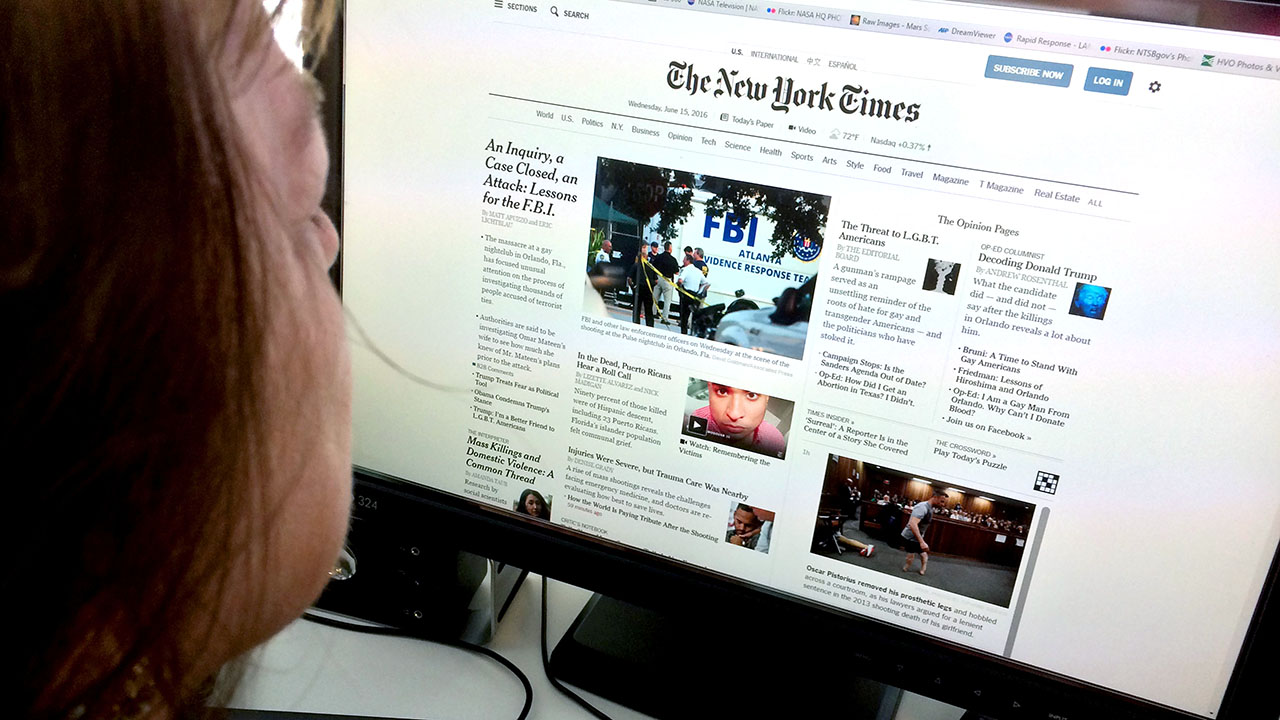Fascination About News Channels
Fascination About News Channels
Blog Article
The smart Trick of News Channels That Nobody is Discussing
Table of ContentsAll About News ChannelsThe Ultimate Guide To News ChannelsThe 3-Minute Rule for News ChannelsNews Channels - The Facts
Moving news channels broadcast news content 24 hours a day. The arrival of the internet has actually allowed the regular 24-hour-a-day presentation of numerous video and audio news records, which are upgraded when added info comes to be readily available; numerous television broadcasters offer content initially provided on-air as well as exclusive or supplementary news web content on their sites.Terminals that utilize a "wheel" format tend to keep to an established timetable of specific shows at particular particular minutes on the hour, and among these segments is often a news flash. These brief publications will supply summaries of any type of breaking news of passion, and may consist of neighborhood issues such as weather report or web traffic records.

Information broadcasts in the United States were originally transferred over the radio. NBC began broadcasts in November 1926, with CBS going into production on September 25, 1927. Both originally gone over comparable topics, such as election results, governmental inaugurations, and various other issues of issue to the public. Nonetheless, NBC quickly arised as the leading pressure for enjoyment talent.
The Main Principles Of News Channels
A general shift gradually happened in the design of the evening broadcasts in a lot of nations. In the 1950s, tv was novel enough that it was considered amusement. In the 1960s and 70s, television broadcasts had a tendency to be uncommonly "significant" by later requirements, including even more "tough information" and less light home entertainment mixed in.

From 2000 to 2010, overall viewership of transmission news remained to decline. Some news-adjacent wire programs acquired popularity and success in this era (such as the comedy-focused and the commentary-focused ). Nonetheless, their gains did not balance out the continuing steep decline in viewership of mainline network news. This age saw diversity and fragmentation proceed even further as new specific niche networks got importance such as the business-focused CNBC, Bloomberg Tv, and Fox Company.
Top Guidelines Of News Channels
newscasts on other terminals. The National, which has aired on CBC Tv because 1954, is the longest-running national network broadcast in Canada. All 3 networks likewise generate once a week newsmagazines: CBC's (aired considering that 1975), Global's (broadcast because 2008), and CTV's (aired given that 1966 and presently the longest-running network newsmagazine best site in Canada). [] CTV's is the single national early morning news program on program tv in Canada, and replaced, which aired considering that 1975.
Neighborhood television stations in the United States typically transmitted regional information 3 to 4 times a day usually: generally broadcasting at 4:30, 5:00, 5:30, or 6:00 a.m (News Channels).; noontime; 5:00 and 6:00 p.m. in the very early night; and 10:00 or 11:00 p.m. Some terminals lug early morning broadcasts at 4:00, 7:00, 8:00, or 9:00 a.m., lunchtime broadcasts at 11:00 or 11:30 a.m., late mid-day broadcasts at 4:00 or 4:30 p.m., or very early night broadcasts at 5:00 or 6:00 p.m
in the Eastern have a peek at these guys and Pacific time areas or 9:00 p.m. in the Hill and Central time areas in the united state). Terminals that create neighborhood broadcasts typically transmit as low as one to as much over twelve hours of regional news on weekdays and just one hour to as high as 7 hours on weekend breaks; news programming on weekends are generally limited to morning and evening broadcasts as the variable organizing of network sports shows (if a terminal is affiliated with a network with a sporting activities division) usually stops most terminals from bring midday broadcasts (nevertheless a few terminals situated in the Eastern and Pacific time zones do produce weekend break lunchtime newscasts). [] From the 1940s to the 1960s, broadcast tv stations usually offered local information programs only one to two times each night for 15 minutes (the normal size for numerous locally generated programs at the time); typically these programs aired as supplements to network-supplied night news programs or leadouts for primetime shows.
The Basic Principles Of News Channels
News share arrangements are most usual with stations co-owned. News Channels with a larger network affiliate or whose operations are jointly taken care of via a shared service or regional advertising and marketing arrangement. In instances where a station with an existing information department participates in a news share agreement, it will result either both departments merging or the straight-out conversion of newscast production from internal to outsourced manufacturing.
These names are intended to set one station in addition to the rest, specifically for visitors that are chosen for target market measurement surveys. If the participant was not able to provide a channel number or call letters, the broadcast title is often adequate for the appropriate station to obtain Nielsen scores credit history. [] The Big 3 program tv networks produce early morning and evening national broadcasts.
Report this page